Zhining Liu
Flow Matching Meets Biology and Life Science: A Survey
Jul 23, 2025Abstract:Over the past decade, advances in generative modeling, such as generative adversarial networks, masked autoencoders, and diffusion models, have significantly transformed biological research and discovery, enabling breakthroughs in molecule design, protein generation, drug discovery, and beyond. At the same time, biological applications have served as valuable testbeds for evaluating the capabilities of generative models. Recently, flow matching has emerged as a powerful and efficient alternative to diffusion-based generative modeling, with growing interest in its application to problems in biology and life sciences. This paper presents the first comprehensive survey of recent developments in flow matching and its applications in biological domains. We begin by systematically reviewing the foundations and variants of flow matching, and then categorize its applications into three major areas: biological sequence modeling, molecule generation and design, and peptide and protein generation. For each, we provide an in-depth review of recent progress. We also summarize commonly used datasets and software tools, and conclude with a discussion of potential future directions. The corresponding curated resources are available at https://github.com/Violet24K/Awesome-Flow-Matching-Meets-Biology.
PLANETALIGN: A Comprehensive Python Library for Benchmarking Network Alignment
May 27, 2025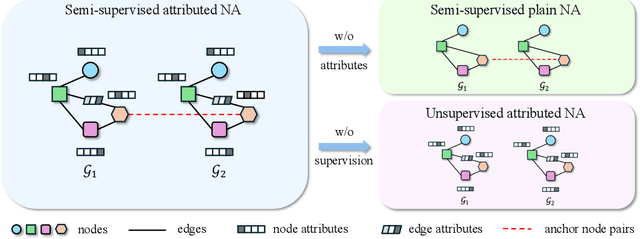
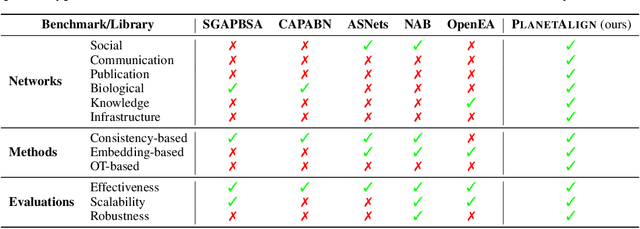
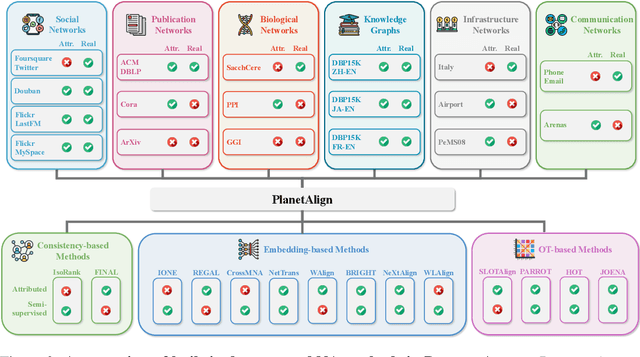
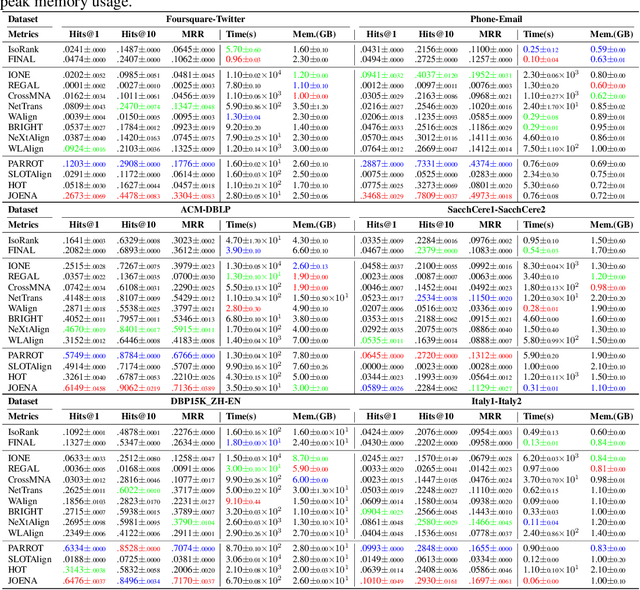
Abstract:Network alignment (NA) aims to identify node correspondence across different networks and serves as a critical cornerstone behind various downstream multi-network learning tasks. Despite growing research in NA, there lacks a comprehensive library that facilitates the systematic development and benchmarking of NA methods. In this work, we introduce PLANETALIGN, a comprehensive Python library for network alignment that features a rich collection of built-in datasets, methods, and evaluation pipelines with easy-to-use APIs. Specifically, PLANETALIGN integrates 18 datasets and 14 NA methods with extensible APIs for easy use and development of NA methods. Our standardized evaluation pipeline encompasses a wide range of metrics, enabling a systematic assessment of the effectiveness, scalability, and robustness of NA methods. Through extensive comparative studies, we reveal practical insights into the strengths and limitations of existing NA methods. We hope that PLANETALIGN can foster a deeper understanding of the NA problem and facilitate the development and benchmarking of more effective, scalable, and robust methods in the future. The source code of PLANETALIGN is available at https://github.com/yq-leo/PlanetAlign.
Breaking Silos: Adaptive Model Fusion Unlocks Better Time Series Forecasting
May 24, 2025Abstract:Time-series forecasting plays a critical role in many real-world applications. Although increasingly powerful models have been developed and achieved superior results on benchmark datasets, through a fine-grained sample-level inspection, we find that (i) no single model consistently outperforms others across different test samples, but instead (ii) each model excels in specific cases. These findings prompt us to explore how to adaptively leverage the distinct strengths of various forecasting models for different samples. We introduce TimeFuse, a framework for collective time-series forecasting with sample-level adaptive fusion of heterogeneous models. TimeFuse utilizes meta-features to characterize input time series and trains a learnable fusor to predict optimal model fusion weights for any given input. The fusor can leverage samples from diverse datasets for joint training, allowing it to adapt to a wide variety of temporal patterns and thus generalize to new inputs, even from unseen datasets. Extensive experiments demonstrate the effectiveness of TimeFuse in various long-/short-term forecasting tasks, achieving near-universal improvement over the state-of-the-art individual models. Code is available at https://github.com/ZhiningLiu1998/TimeFuse.
CLIMB: Class-imbalanced Learning Benchmark on Tabular Data
May 23, 2025Abstract:Class-imbalanced learning (CIL) on tabular data is important in many real-world applications where the minority class holds the critical but rare outcomes. In this paper, we present CLIMB, a comprehensive benchmark for class-imbalanced learning on tabular data. CLIMB includes 73 real-world datasets across diverse domains and imbalance levels, along with unified implementations of 29 representative CIL algorithms. Built on a high-quality open-source Python package with unified API designs, detailed documentation, and rigorous code quality controls, CLIMB supports easy implementation and comparison between different CIL algorithms. Through extensive experiments, we provide practical insights on method accuracy and efficiency, highlighting the limitations of naive rebalancing, the effectiveness of ensembles, and the importance of data quality. Our code, documentation, and examples are available at https://github.com/ZhiningLiu1998/imbalanced-ensemble.
MORALISE: A Structured Benchmark for Moral Alignment in Visual Language Models
May 20, 2025Abstract:Warning: This paper contains examples of harmful language and images. Reader discretion is advised. Recently, vision-language models have demonstrated increasing influence in morally sensitive domains such as autonomous driving and medical analysis, owing to their powerful multimodal reasoning capabilities. As these models are deployed in high-stakes real-world applications, it is of paramount importance to ensure that their outputs align with human moral values and remain within moral boundaries. However, existing work on moral alignment either focuses solely on textual modalities or relies heavily on AI-generated images, leading to distributional biases and reduced realism. To overcome these limitations, we introduce MORALISE, a comprehensive benchmark for evaluating the moral alignment of vision-language models (VLMs) using diverse, expert-verified real-world data. We begin by proposing a comprehensive taxonomy of 13 moral topics grounded in Turiel's Domain Theory, spanning the personal, interpersonal, and societal moral domains encountered in everyday life. Built on this framework, we manually curate 2,481 high-quality image-text pairs, each annotated with two fine-grained labels: (1) topic annotation, identifying the violated moral topic(s), and (2) modality annotation, indicating whether the violation arises from the image or the text. For evaluation, we encompass two tasks, \textit{moral judgment} and \textit{moral norm attribution}, to assess models' awareness of moral violations and their reasoning ability on morally salient content. Extensive experiments on 19 popular open- and closed-source VLMs show that MORALISE poses a significant challenge, revealing persistent moral limitations in current state-of-the-art models. The full benchmark is publicly available at https://huggingface.co/datasets/Ze1025/MORALISE.
ClimateBench-M: A Multi-Modal Climate Data Benchmark with a Simple Generative Method
Apr 10, 2025Abstract:Climate science studies the structure and dynamics of Earth's climate system and seeks to understand how climate changes over time, where the data is usually stored in the format of time series, recording the climate features, geolocation, time attributes, etc. Recently, much research attention has been paid to the climate benchmarks. In addition to the most common task of weather forecasting, several pioneering benchmark works are proposed for extending the modality, such as domain-specific applications like tropical cyclone intensity prediction and flash flood damage estimation, or climate statement and confidence level in the format of natural language. To further motivate the artificial general intelligence development for climate science, in this paper, we first contribute a multi-modal climate benchmark, i.e., ClimateBench-M, which aligns (1) the time series climate data from ERA5, (2) extreme weather events data from NOAA, and (3) satellite image data from NASA HLS based on a unified spatial-temporal granularity. Second, under each data modality, we also propose a simple but strong generative method that could produce competitive performance in weather forecasting, thunderstorm alerts, and crop segmentation tasks in the proposed ClimateBench-M. The data and code of ClimateBench-M are publicly available at https://github.com/iDEA-iSAIL-Lab-UIUC/ClimateBench-M.
CATS: Mitigating Correlation Shift for Multivariate Time Series Classification
Apr 05, 2025Abstract:Unsupervised Domain Adaptation (UDA) leverages labeled source data to train models for unlabeled target data. Given the prevalence of multivariate time series (MTS) data across various domains, the UDA task for MTS classification has emerged as a critical challenge. However, for MTS data, correlations between variables often vary across domains, whereas most existing UDA works for MTS classification have overlooked this essential characteristic. To bridge this gap, we introduce a novel domain shift, {\em correlation shift}, measuring domain differences in multivariate correlation. To mitigate correlation shift, we propose a scalable and parameter-efficient \underline{C}orrelation \underline{A}dapter for M\underline{TS} (CATS). Designed as a plug-and-play technique compatible with various Transformer variants, CATS employs temporal convolution to capture local temporal patterns and a graph attention module to model the changing multivariate correlation. The adapter reweights the target correlations to align the source correlations with a theoretically guaranteed precision. A correlation alignment loss is further proposed to mitigate correlation shift, bypassing the alignment challenge from the non-i.i.d. nature of MTS data. Extensive experiments on four real-world datasets demonstrate that (1) compared with vanilla Transformer-based models, CATS increases over $10\%$ average accuracy while only adding around $1\%$ parameters, and (2) all Transformer variants equipped with CATS either reach or surpass state-of-the-art baselines.
Language in the Flow of Time: Time-Series-Paired Texts Weaved into a Unified Temporal Narrative
Feb 13, 2025Abstract:While many advances in time series models focus exclusively on numerical data, research on multimodal time series, particularly those involving contextual textual information commonly encountered in real-world scenarios, remains in its infancy. Consequently, effectively integrating the text modality remains challenging. In this work, we highlight an intuitive yet significant observation that has been overlooked by existing works: time-series-paired texts exhibit periodic properties that closely mirror those of the original time series. Building on this insight, we propose a novel framework, Texts as Time Series (TaTS), which considers the time-series-paired texts to be auxiliary variables of the time series. TaTS can be plugged into any existing numerical-only time series models and enable them to handle time series data with paired texts effectively. Through extensive experiments on both multimodal time series forecasting and imputation tasks across benchmark datasets with various existing time series models, we demonstrate that TaTS can enhance predictive performance and achieve outperformance without modifying model architectures.
SelfElicit: Your Language Model Secretly Knows Where is the Relevant Evidence
Feb 12, 2025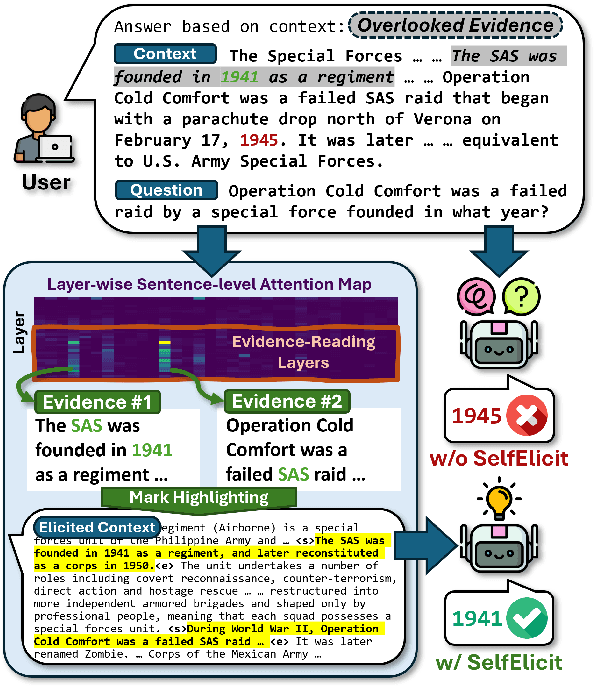
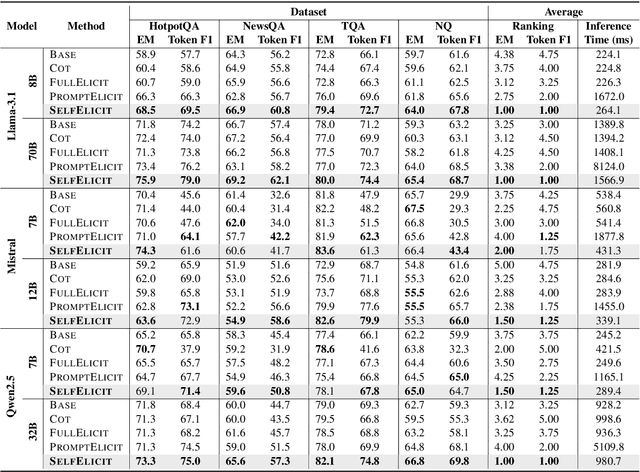

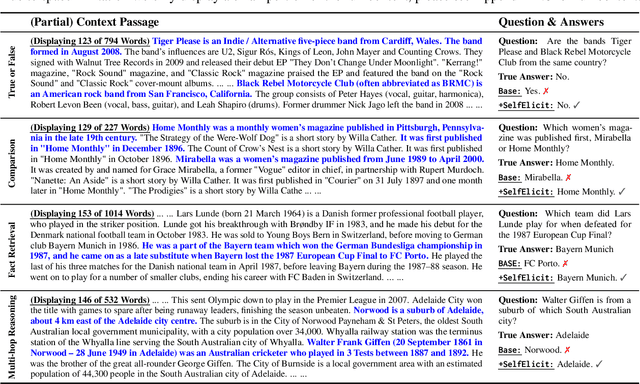
Abstract:Providing Language Models (LMs) with relevant evidence in the context (either via retrieval or user-provided) can significantly improve their ability to provide factually correct grounded responses. However, recent studies have found that LMs often struggle to fully comprehend and utilize key evidence from the context, especially when it contains noise and irrelevant information - an issue common in real-world scenarios. To address this, we propose SelfElicit, an inference-time approach that helps LMs focus on key contextual evidence through self-guided explicit highlighting. By leveraging the inherent evidence-finding capabilities of LMs using the attention scores of deeper layers, our method automatically identifies and emphasizes key evidence within the input context, facilitating more accurate and factually grounded responses without additional training or iterative prompting. We demonstrate that SelfElicit brings consistent and significant improvement on multiple evidence-based QA tasks for various LM families while maintaining computational efficiency. Our code and documentation are available at https://github.com/ZhiningLiu1998/SelfElicit.
A Zero-Shot Generalization Framework for LLM-Driven Cross-Domain Sequential Recommendation
Jan 31, 2025



Abstract:Zero-shot cross-domain sequential recommendation (ZCDSR) enables predictions in unseen domains without the need for additional training or fine-tuning, making it particularly valuable in data-sparse environments where traditional models struggle. Recent advancements in large language models (LLMs) have greatly improved ZCDSR by leveraging rich pretrained representations to facilitate cross-domain knowledge transfer. However, a key challenge persists: domain semantic bias, which arises from variations in vocabulary and content focus across domains. This misalignment leads to inconsistencies in item embeddings and hinders generalization. To address this issue, we propose a novel framework designed to enhance LLM-based ZCDSR by improving cross-domain alignment at both the item and sequential levels. At the item level, we introduce a generalization loss that promotes inter-domain compactness by aligning embeddings of similar items across domains while maintaining intra-domain diversity to preserve unique item characteristics. This prevents embeddings from becoming overly generic while ensuring effective transferability. At the sequential level, we develop a method for transferring user behavioral patterns by clustering user sequences in the source domain and applying attention-based aggregation for target domain inference. This dynamic adaptation of user embeddings allows effective zero-shot recommendations without requiring target-domain interactions. Comprehensive experiments across multiple datasets and domains demonstrate that our framework significantly improves sequential recommendation performance in the ZCDSR setting. By mitigating domain bias and enhancing the transferability of sequential patterns, our method provides a scalable and robust approach for achieving more effective zero-shot recommendations across domains.
 Add to Chrome
Add to Chrome Add to Firefox
Add to Firefox Add to Edge
Add to Edge